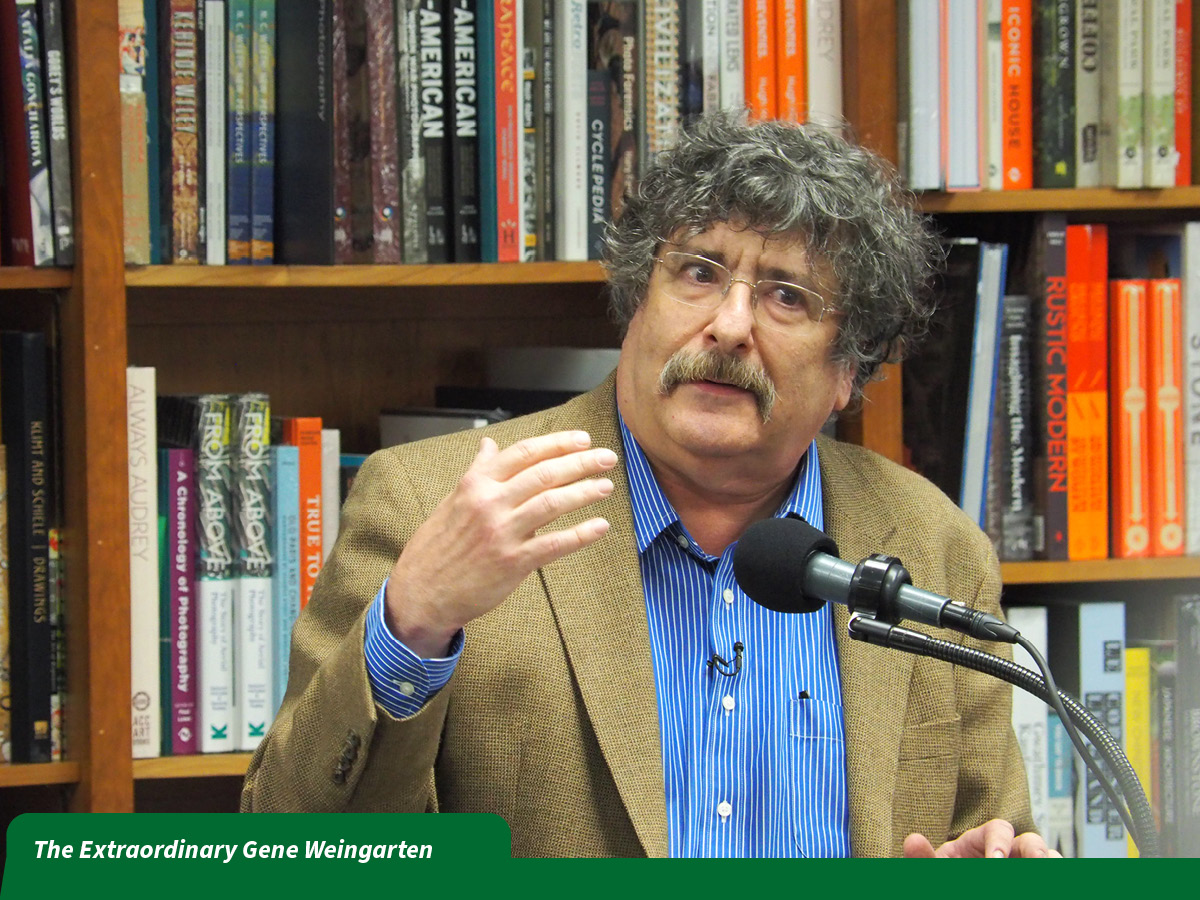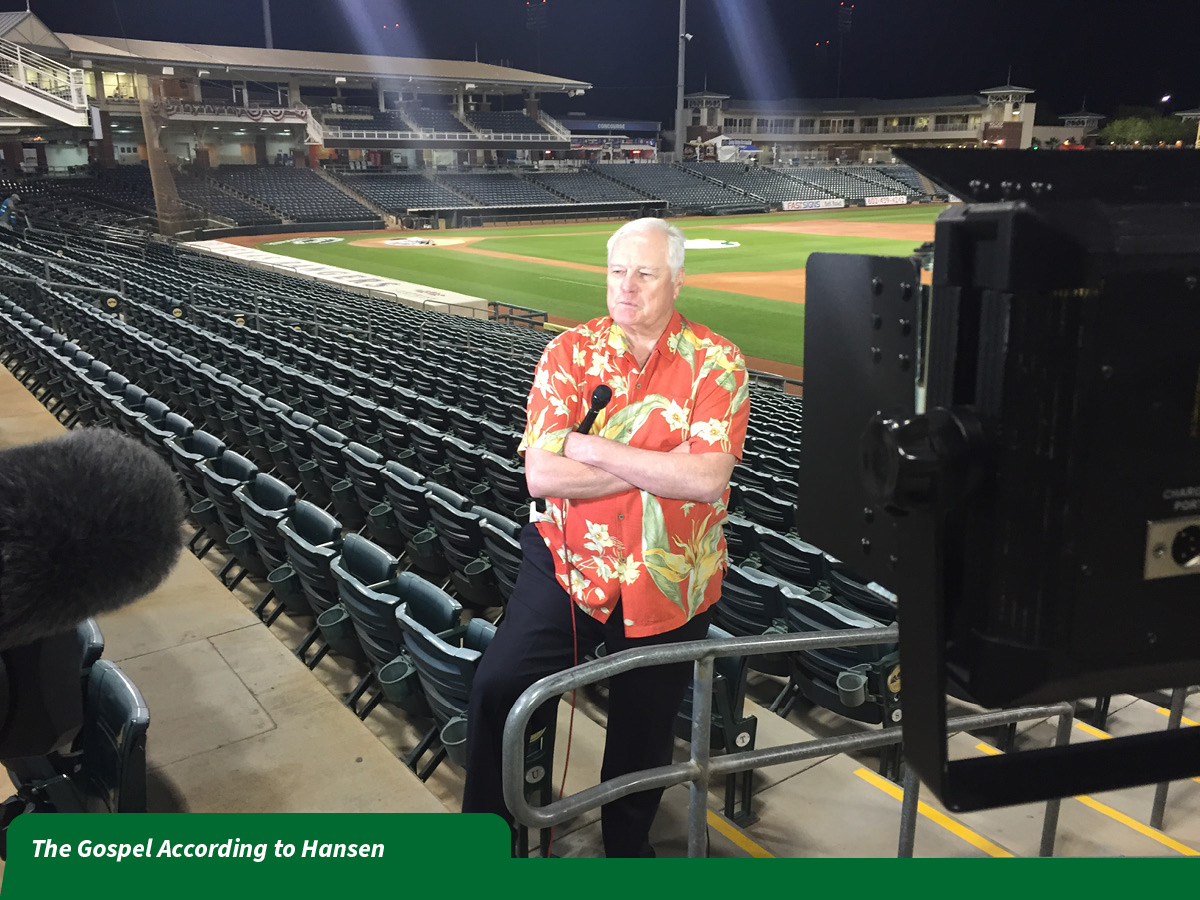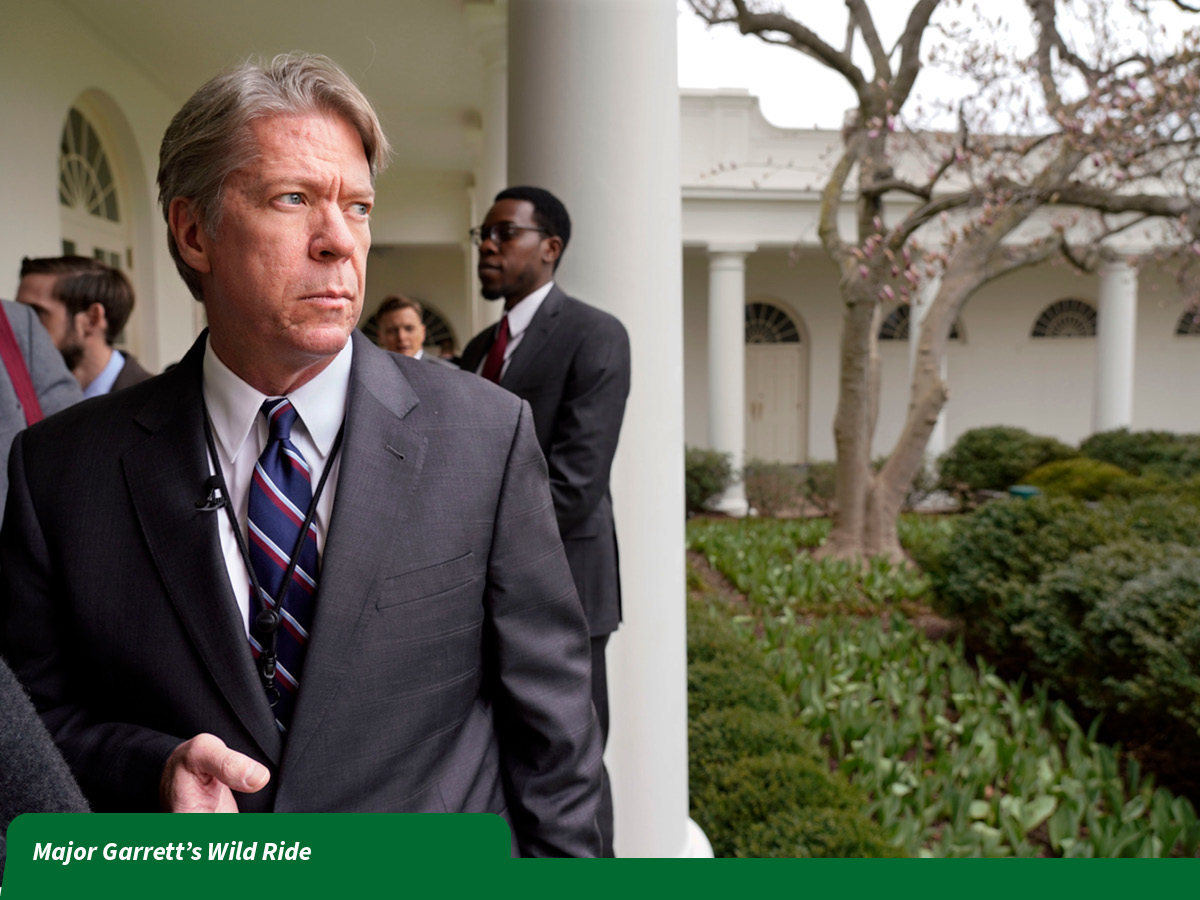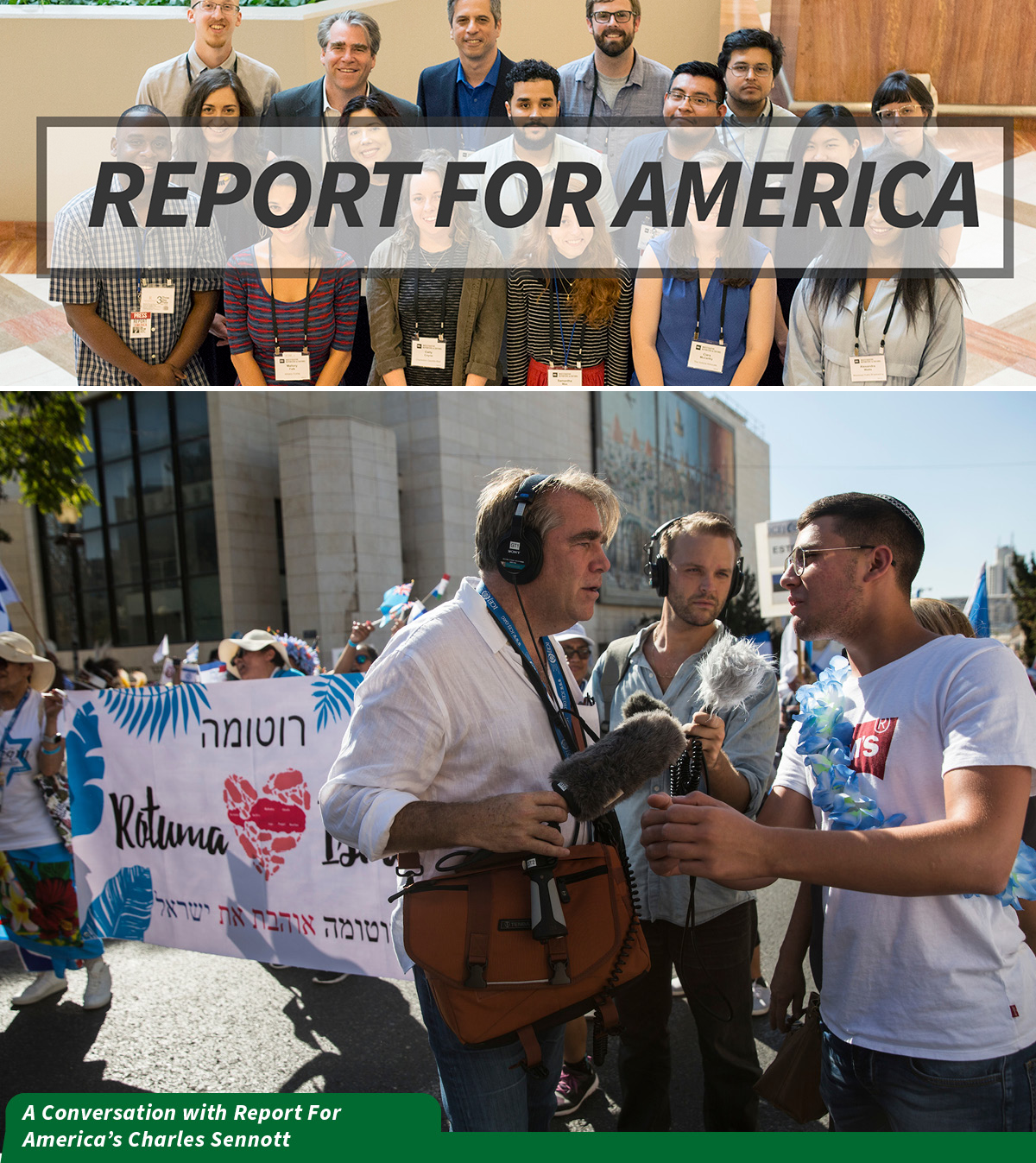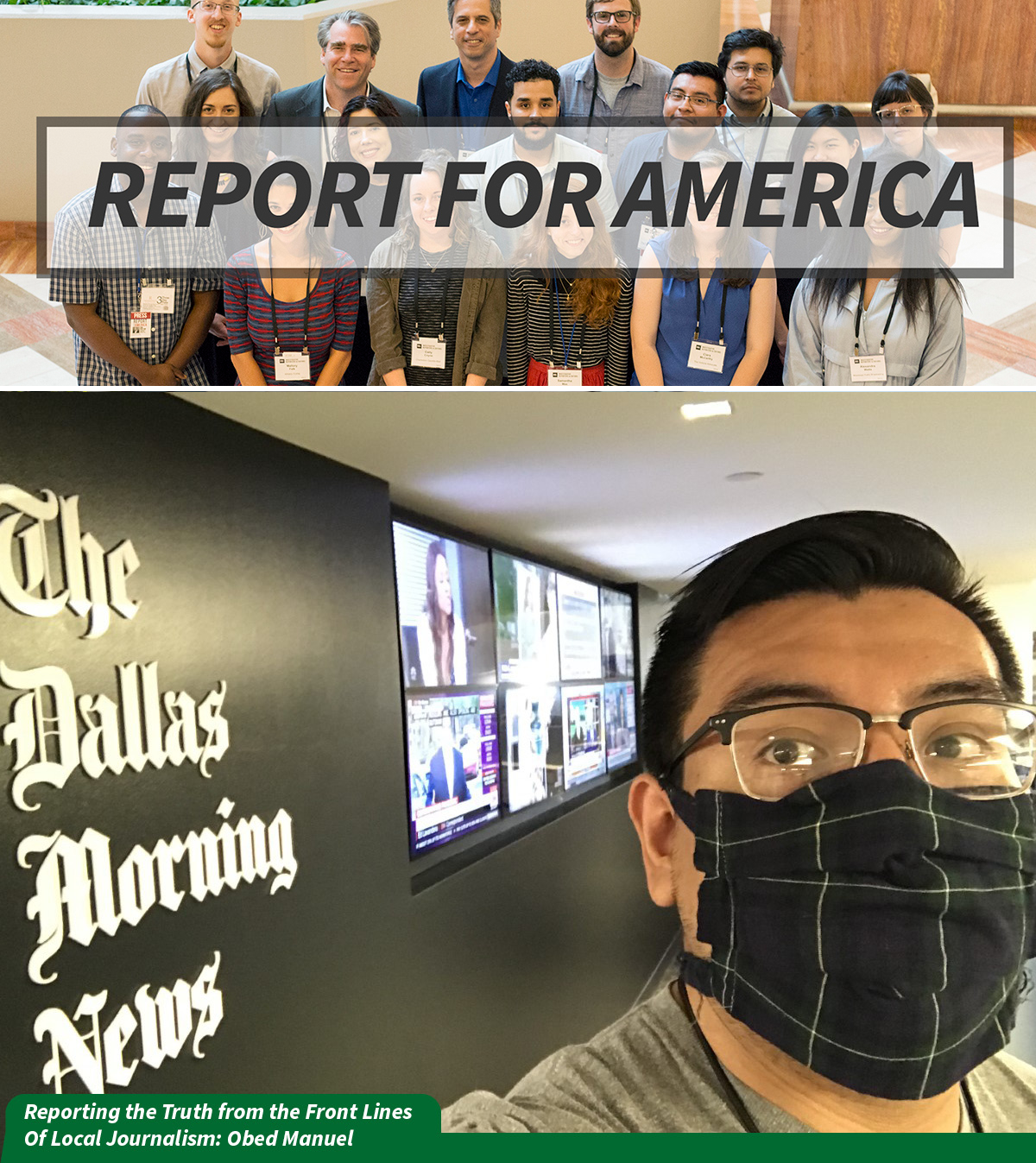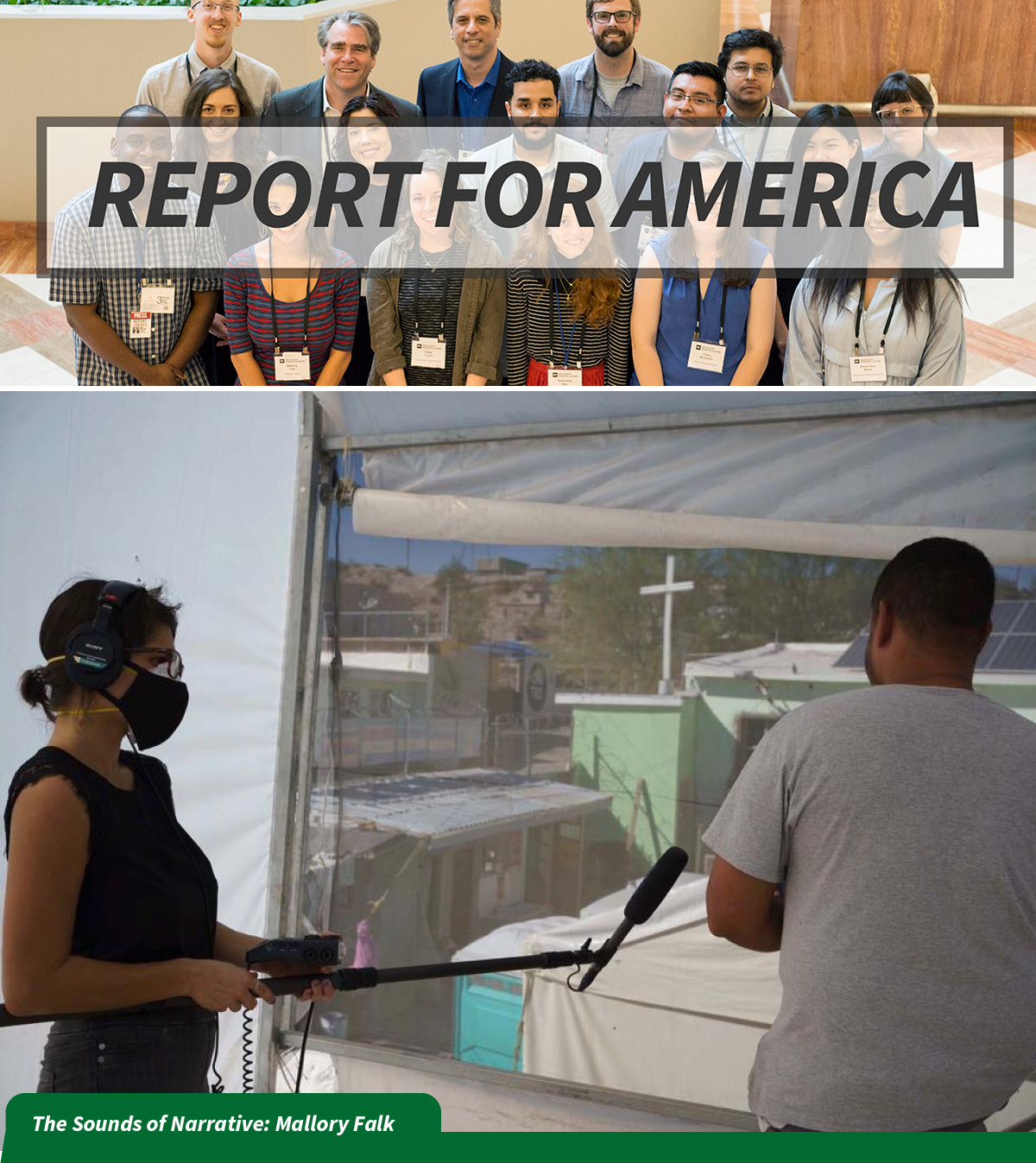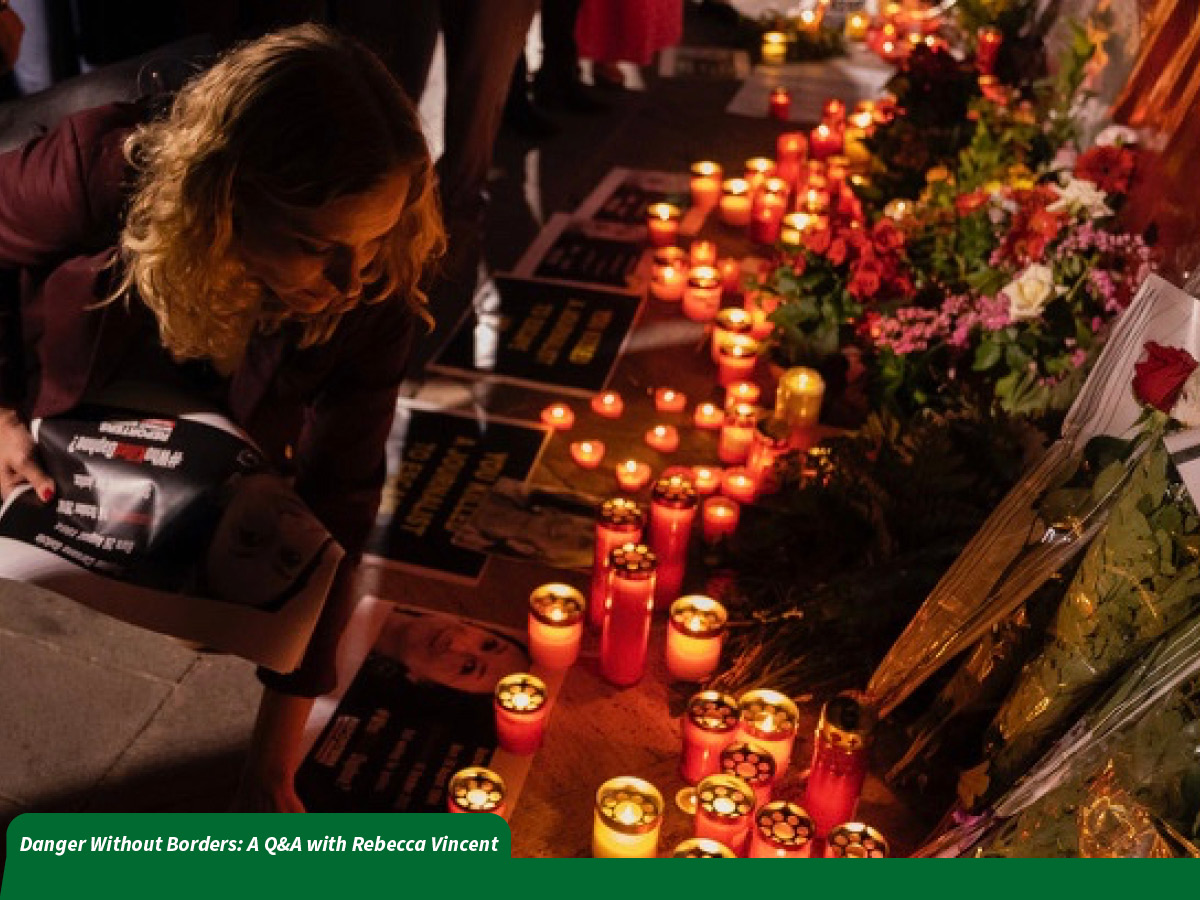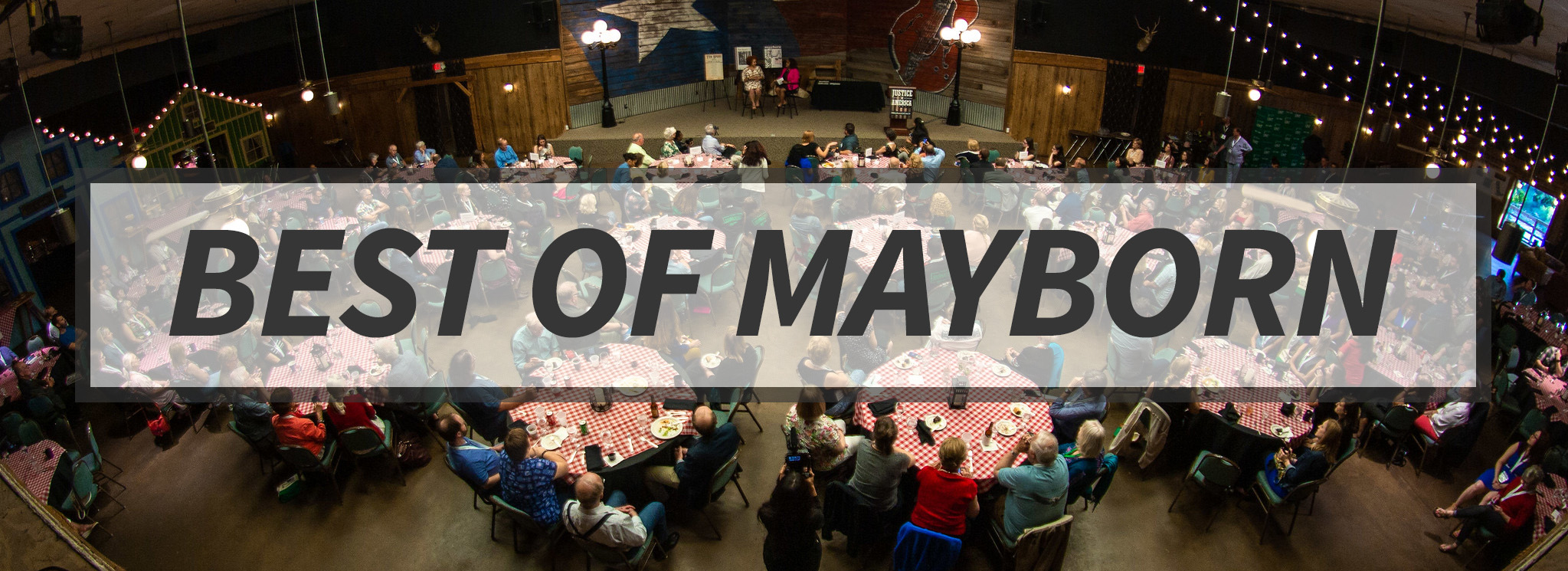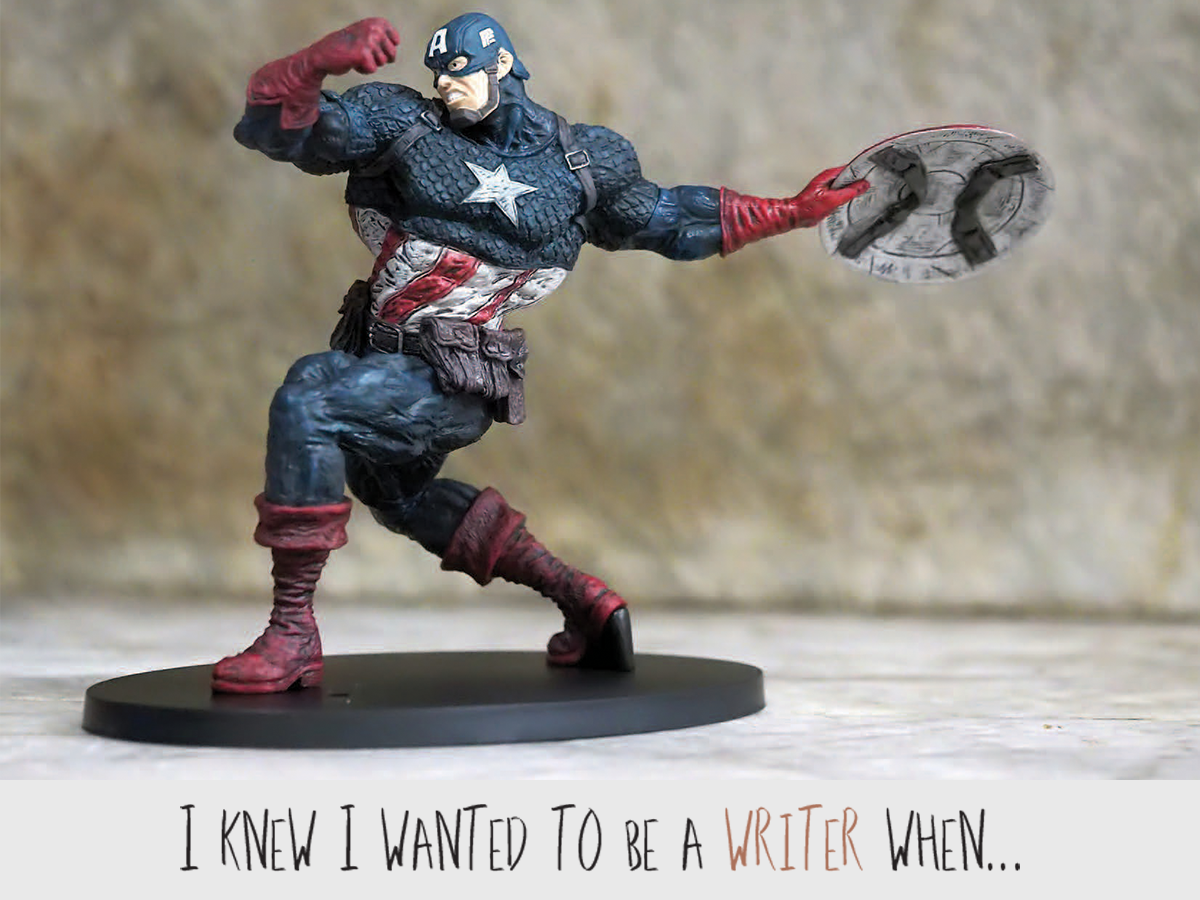Mayborn Magazine 2020
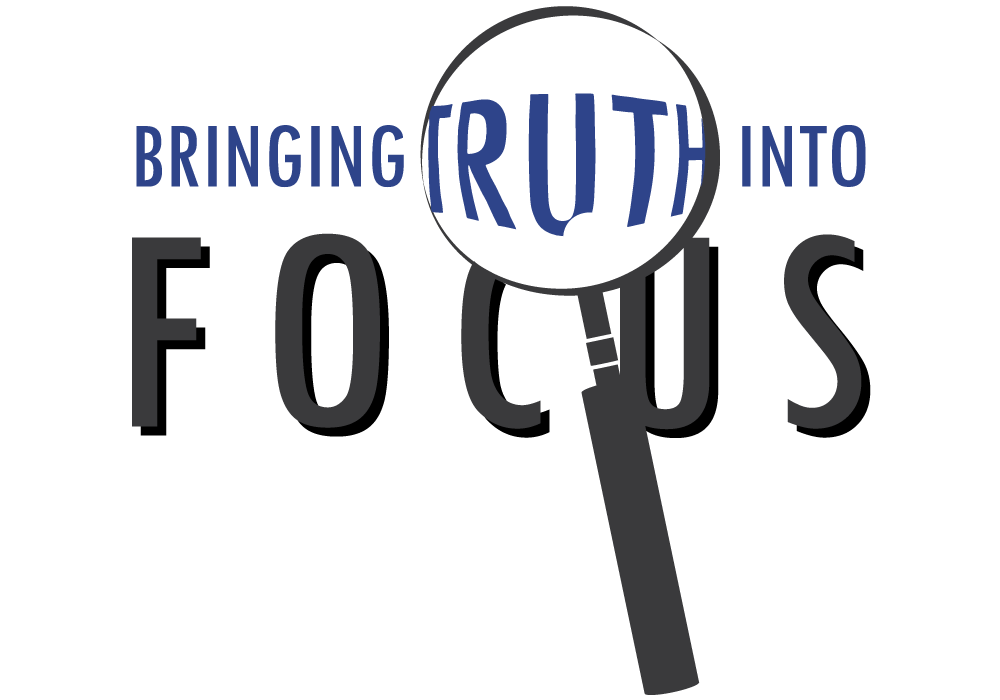
Editor's Note
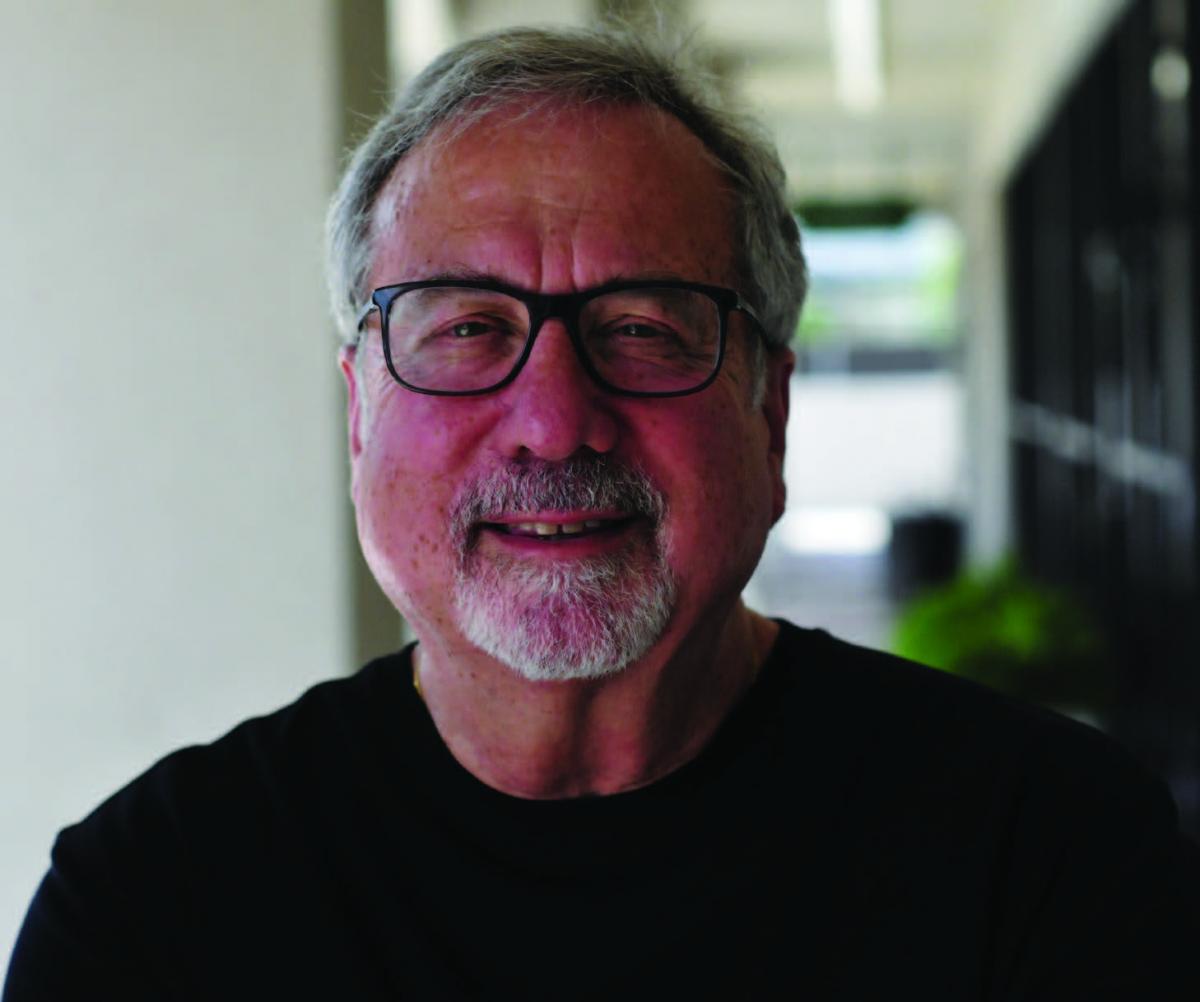 Each semester, my journalism students do a writing exercise that goes something like this:
Each semester, my journalism students do a writing exercise that goes something like this:
Don’t even think about coming to class today. Instead, hit the streets and follow an individual of your own choosing. You can ride along with a bus driver, watch a police officer, observe a construction worker. The only requirement is that you hang out with the individual, gathering telling detail and narrative description. But don’t ask questions. Just watch - and listen. There is an art to this kind of immersion journalism. It’s what writer Gay Talese calls, “The Fine Art of Hanging Out.”
For grad students in our Mayborn magazine class, this is more than a writing exercise. It’s the narrative frame through which they tell their stories as they fan out across the country each year, profiling writers invited to speak at our annual Mayborn Literary Nonfiction Conference.
Each spring for the last 15, these student have hung out with these literary luminaries, watching them go about the business of narrative, whether that means shadowing them on an interview or capturing their writing process—a sensory engagement to let readers know what it’s like to be Lawrence Wright or Susan Orleans or Hampton Sides. Each spring, that is, until this spring when the pandemic grounded our students.
But our students did what journalists around the world are doing, turning to Zoom and other virtual platforms to gather information. Deprived of hanging out, they still had the ability to interview deeply. So, scenes could still be set, anecdotes mined, not through observation, but through reconstruction.
The result is our first digital publication, a collection of stories that go beyond the normal conventions of this magazine. Included are not just narrative writers but also narrative photojournalists such as Mary F. Calvert, and those who fight for the rights of journalists such as Reporters Without Borders Rebecca Vincent, a UNT alum. She has spent the better part of her working life committed to a global campaign for a free press. Her passion pours off the pages of her in-depth Q&A profile entitled “Danger Without Borders.”
Entrepreneur Charles Sennott is trying to save local journalism one newsroom at a time as the co-founder of Report for America. His nonprofit seeks to bolster democracy by helping local news speak truth to power. His method: hire a core of emerging journalists to seed local newsrooms. In three years, Sennott has placed more than 200 journalists in newsrooms across the country, two of whom are profiled in this year’s Mayborn: Obed Manuel, a print journalist for The Dallas Morning News working the immigration beat, and Mallory Falk, a broadcast journalist for an El Paso public radio station, also covering immigration. We tell their stories as well as Sennott’s.
In case you are wondering, the Mayborn is still tethered to the Mayborn Literary Nonfiction Conference. Our digital pages contain two of this year’s conference keynotes, CBS Washington Correspondent Major Garrett and Washington Post syndicated columnist Gene Weingarten.
Of the stories published in this Mayborn issue, only the piece on Dallas sportscaster Dale Hansen had an in- person interview. “The World According to Hansen” reveals its subject to be more than your average sportscaster. His “Unplugged” commentaries have garnered him much acclaim as he speaks the truth about so much more than sports.
With the Mayborn magazine going digital, we were able to resurrect our favorite narrative features from Mayborn’s past. These award-winning stories will now have a home to live virtually and forever.
There is more, of course, much of it made possible through the commitment of Mayborn School of Journalism Principal Lecturer Neil Foote who doubles as the Mayborn Conference director, and Mayborn School of Journalism Dean Andrea Miller who doubles as everything else.
A special shout out to Eric Nishimoto, whose gallant efforts as editorial consultant have kept this year’s publication on track, just as they have over the last four publications.
Hope you enjoy this year’s edition of the Mayborn and hope you enjoy the conference. See you there (virtually, of course).
Mark Donald,
Editor, Mayborn Magazine
Senior Lecturer, Mayborn School of Journalism
Final Take
A note from Mayborn Conference Director Neil Foote
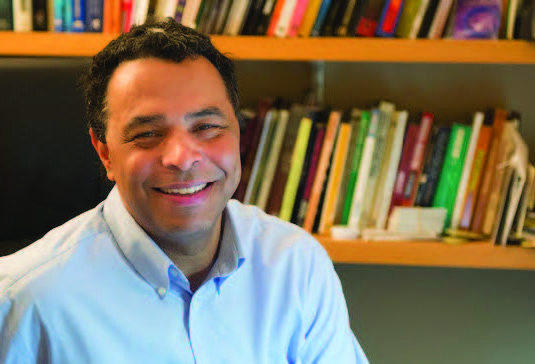 As a young, eager reporter at the Miami Herald’s Neighbors Northwest bureau in Hialeah, I was excited to learn that I would have a chance to work with Gene Miller, a two-time winner of the Pulitzer Prize, who spent time the later years of his career as a writing coach. After he spent years reporting, he dove in to work with such legendary journalists as Edna Buchanan, Jim McGee and Carl Hiaasen – and young bucks like me trying to make a name for themselves.
As a young, eager reporter at the Miami Herald’s Neighbors Northwest bureau in Hialeah, I was excited to learn that I would have a chance to work with Gene Miller, a two-time winner of the Pulitzer Prize, who spent time the later years of his career as a writing coach. After he spent years reporting, he dove in to work with such legendary journalists as Edna Buchanan, Jim McGee and Carl Hiaasen – and young bucks like me trying to make a name for themselves.
Adorned in his characteristic bow tie, Gene offered his, “Hihowyadoin’?”, then quickly asked for a printout of my 60-inch story. It was a profile of a woman who ran a foster home for children in northwest Dade County. I thought I’d done a decent job. Well, Gene thought otherwise. He took a few minutes to read it. Note, a few minutes. Then, the work began. He peppered me with questions: What did she look like? What was she wearing? What were her gestures like? Describe her office … the way she talked. For an hour, he pushed me to dig deep into my notes – and memory – to recreate the scene. A few hours later, we worked our way through the story. I was exhausted, frustrated and honored to have worked with Gene. I learned reporting and writing was more than just showing up, asking questions and moving on. No matter what the story is, I realized, details matter. Dialogue matters. Characters matter. Scenes matter.
Fast forward some 25 years, and I land at UNT and the Mayborn School of Journalism – home of the Mayborn Literary Nonfiction Conference. Among the first people I met during my job interview was George Getschow, one of the conference’s co-founders. He and I quickly dove into conversations about the journalists with whom both he and I had worked with over the years, and the conference that he help launch. What a wonderful irony, I thought, that I’d get a chance to be part of school that promoted great reporting, writing and storytelling. In working with Mike Mooney as co-director for several years, he echoed George’s passion for the power of words – even in a world where tweets, shares and 10-second videos are capturing people’s attention.
Now, as the conference approaches its 16th year, George has retired and Mike has shifted focus to his successful freelance writing career. Both continue to be our biggest cheerleaders. This year, we have a yeoman’s task: We are committed to recreating virtually the energy, creativity and community that is such a unique and memorable part of the in-person Mayborn Conference experience. That’s a challenge, but I’m excited about the possibilities of sharing this conference with an even broader audience. Journalists aren’t the only storytellers. There are thousands of aspiring storytellers – students, career executives, community leaders, veterans, caregivers, educators, police officers, pilots and so many others.
As a virtual conference, we want our steadfast conference community and a growing new audience to enjoy the rich, engaging details that so many of our panelists and keynotes share during their presentations. This year, our theme, “2020: Bringing Truth into Focus,” is shaping up into a series of conversations that include Major Garrett, the veteran CBS News White House journalist and author who has worked for both Fox News and CNN; Sarah Broom, the National Book Award winning author of “The Yellow House,” and two-time Pulitzer Prize winner Gene Weingarten author of the best-selling book, “One Day.” There’s nothing more fascinating than hearing the likes of Skip Hollandsworth, author and Texas Monthly editor, or Peter Simek, arts editor for D Magazine or Joan Donaldson, awardwinning author, orchestrate a conversation where a writer gradually unpacks their reporting and writing process. Session after session reveals to each of us – no matter what level of writer you are – there’s a sense of duty to never give up on a source; to never shortcut your reporting or research; and to always tell the story in a way that draws your reader into the moment, forgetting about the world around them, and immersing themselves in the world you’ve created.
At our virtual Mayborn Conference this year, we see no reason to disappoint our most loyal participants and our newest ones. How lucky it is for me to work with some of the world’s best writers, including Doug Swanson, author, “The Cult of Glory: The Bold and Brutal History of the Texas Rangers”; Eli Saslow, the award-winning Washington Post reporter and author of “Rising Out of Hatred: The Awakening of a White Nationalist”; Peter Baker and Susan Glasser, the veteran reporters and authors of “The Man Who Ran Washington: The Life and Times of James A. Baker III”; Jamie Thompson, and author of the timely book, “Standoff: Race, Policing and the Deadly Assault that Gripped a Nation”; Julian Aguilar, politics and border affairs reporter, Texas Tribune and a Mayborn alumnus, Alfredo Corchado, U.S/Mexico affairs reporter, The Dallas Morning News and Gromer Jeffers, political reporter, The Dallas Morning News. They follow in the footsteps of a legacy of other great presenters such as Joyce Carol Oates, Nikole Hannah-Jones, Taylor Branch, Gay Talese, Ira Glass, Sebastian Unger, Isabel Wilkerson, Gilbert King, Lawrence Wright, N. Scott Momaday, Mary Karr and David Ignatius.
I realize it’s not the same without our single-room amphitheater setting of the Val Verde Room or Bonnie & Clyde’s, the late-night-early-morning watering hole for conference-goers. But, trust me, we’ll be hosting a virtual happy hour to allow you all to talk about the conference, writing and the world’s most pressing issues. Since it is the Mayborn, never short of creativity and great ideas, I’m counting on a few new traditions that will spawn their own tales from this conference.
Yours in storytelling,
Neil Foote
Director, Mayborn Literary Nonfiction Conference
Principal Lecturer, Mayborn School of Journalism






